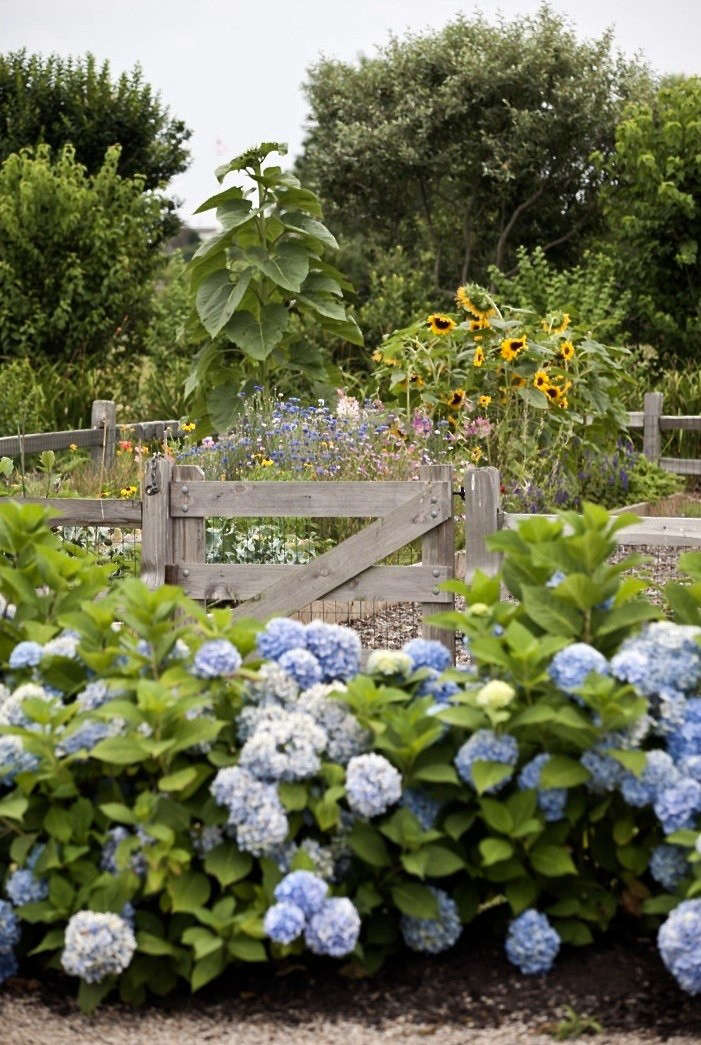The southern tip of Manhattan is a mecca for tourists thronging to buy tickets for sightseeing tours to the Statue of Liberty and for commuters trekking across the water aboard the iconic orange Staten Island ferries. But it is also a paradise for plant lovers and for gardeners hungry for ideas and gentle tutelage. Under the canopy of slender-trunked plane trees and beside the expanse of New York Harbor, the Battery Conservancy Gardens offer a dizzying assortment of seasonally intriguing plants. Their bloom sequence—in areas that range from high shade to waterside full sun—is carefully timed to create a cascade of flowers from spring through fall, while textural interest and form provide a framework for those flowers. The plantings are designed by Piet Oudolf, and they welcome the attentive visitor in the way that a living museum might. Admission is free, you can stay as long as you like, and you are mercifully aware that you are not part of the crush boarding those bobbing boats. Everything is calm here. And inspiration is at your fingertips.
Let’s visit. It is midsummer.
Photography by Marie Viljoen

Early summer in the collection of gardens at the Battery Conservancy belongs to Alliums. These ornamental onions are used to full effect and make an arresting statement in the first border you meet, walking west from the Staten Island Ferry terminal.

Timing is everything in good garden design. Combining the massive, late spring flowerheads of Allium christophii with structural grasses that will gradually envelop them by late summer creates not only an interplay of form and color, but additional interest in a limited amount of space.

The alliums are like starburst fireworks, except better appreciated near ground level.

In the garden known as The Bosque, under the high shade of London plane trees, a white-flowered allium thrives.


Eastern US native Hydrangea quercifolia is planted at intervals beneath the trees, its flowers persisting to the first frost.

The feathered white plumes of North American native Aruncus dioicus (goatsbeard) begin to bloom in June, a week or so ahead of more familiar Astilbe.

The star-like flowers of Gillenia trifoliata (bowman’s root, used medicinally by Native Americans) are poised on threadlike stems above foliage that blazes yellow in fall.

Slender yellow foxgloves form the middle layer between hardy geraniums and goatsbeard.

The slender foliage of Japanese forest grass creates gentle hummocks in high shade before flowering and turning to amber and gold in autumn.

Near the water airy drifts of Scabiosa bloom on tall, wiry stems.

Phlomoides tuberosa (Jerusalem sage) is a member of the mint family, with clusters of tufted pink flowers encircling statuesque stems.

Penstemon digitalis (beards tongue) is tolerant of poor drainage and attractive to hummingbirds and bees. It is most effective planted in drifts.
There is no off-season in the gardens of the Battery Conservancy. Visit later in summer and the palette will have evolved. It will keep doing so through autumn (early fall is a peak season here) and well into winter, when grasses and tall seedheads persist to create a fretwork against the ever-changing water of the busy harbor in New York Bay.
Take a seat, and stay a while.
For more public gardens to visit, see:
- Garden Visit: Opus 40, An Environmental Sculpture in the Catskills
- Garden Visit: Untermyer Gardens in Yonkers
- Garden Visit: The University of California Botanical Garden at Berkeley









Have a Question or Comment About This Post?
Join the conversation